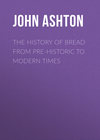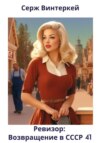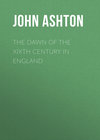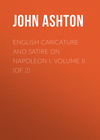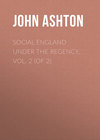Читать книгу: «The History of Bread From Pre-historic to Modern Times», страница 2
This shew bread must have been leavened, for a cake containing nearly three quarts of flour, and unleavened, could hardly be. We have no certainty as to the shape of these twelve loaves, typical of the tribes of Israel; for, although the gold table on which it was placed figures in a bas relief on the Arch of Titus at Rome, there is no bread upon it. The Rabbis say that the loaves were square, and covered with leaves of gold; and that they were placed in two piles of six each, one upon another, on the opposite ends of the table; and that between every two loaves were laid three semi-tubes, like slit canes, of gold, for the purpose of keeping the cakes the better from mouldiness and corruption by admitting the air between them; and it is also said, but upon what authority I know not, that each end of the table was furnished with a tall, three-pronged fork of gold, one at each corner, standing perpendicularly, for the purpose of keeping the loaves in their proper places.
The new bread was set on the table with much ceremony every Sabbath, and it was so ordered that the new bread should be set on one end of the table before the old was taken away from the other, in order that the table might not be for a moment without bread. Jewish tradition states that, to render the bread more peculiar and consecrated from its origin, the priests themselves performed all the operations of sowing, reaping and grinding the corn for the shew bread, as well as of kneading and baking the bread itself. On the table was, probably, some salt, as we read in Lev. ii. 13: ‘With all thine offerings thou shalt offer salt.’
There seems to be little doubt but that the Israelites knew nothing about leavened bread until they went into Egypt, and that they obtained that knowledge from the civilised Egyptians. That they did leaven their bread we learn from Exodus xii. 34-39: ‘And the people took their dough before it was leavened, their kneading-troughs being bound up in their clothes upon their shoulders… And they baked unleavened cakes of the dough which they brought forth out of Egypt, for it was not leavened; because they were thrust out of Egypt, and could not tarry, neither had they prepared for themselves any victual.’
Bread was sometimes dipped in oil as a relish, and in this state it was also used in sacrifice. Lev. viii. 26: ‘And out of the basket of unleavened bread, that was before the Lord, he took one unleavened cake, and a cake of oiled bread, and one wafer,’ etc.; and, occasionally, as we see in Ruth, it was dipped in vinegar. The Jew thanked God for all His good gifts, and with his bread, he took it in his hands, and pronounced the following benediction: ‘Blessed art Thou, O Lord our God, the King of the world, that produceth bread out of the earth.’ If there were many at table, one asked a blessing for the rest. The blessing always preceded the breaking of the bread. The rules concerning the breaking of bread were – the master of the house recited and finished the blessing, and after that he broke the bread; he did not break a small piece, lest he should seem to be sparing; nor a large piece, lest he should be thought to be famished; it was a principal command to break a whole loaf. He that broke the bread put a piece before everyone, and the other took it into his hand. The master of the family ate first of the bread after blessing. Maimonides, writing on Halacoth, or legal formulæ (Beracoth, c. 7), says the guests were not to eat or taste anything till he who broke had tasted first, nor was it permitted at festivals for any of the guests to drink of the cup till the master of the family had done so.
There are several unleavened bread bakeries in London, and one each in Birmingham and Leeds, to supply the Jews resident in the neighbourhood with Passover cakes, or Matzos. Of course, there is an enormous demand for this sort of unleavened bread, and to meet it these bakeries begin baking two months before the commencement of the Passover. These Matzos look like ordinary large water biscuits, except that they are a foot or more in diameter. They are made of flour and water, and contain no other ingredient.
After the flour has been kneaded into a very stiff dough, a lump of it, weighing about 50 lb., is placed on a great block of wood and pressed into a thick sheet by a heavy beam, which is fastened to the block at one end by an iron link and staple. This sheet is next placed under an iron roller, from which it emerges in a long ribbon. It passes under another roller, and another, and then it is thin enough for baking. It is now stamped and cut into the unbaked Matzos, which are placed upon a large peel, or wooden tray, having a long handle, and deposited in an oven. Three minutes later they are taken out, white, but crisp. From the oven they are conveyed to the packing room, where they are allowed to cool, after which they are put up in stacks, and thus kept ready for delivery. Of course, during the whole of Passover week the Jews eat no other bread.
CHAPTER IV
THE BREAD OF THE CLASSIC LANDS
As an introduction to the bread of the Romans and Greeks, let us begin with the pretty myth of Demeter (or Ceres, as the Romans called her), and her daughter Persephone. Zeus, or Jupiter, had promised his daughter Persephone to Pluto, without informing Demeter of his plan, and whilst the girl was plucking flowers which Zeus had caused to grow, in order to fix her attention, Pluto seized her, and, the earth opening, they disappeared, and went to his kingdom of Hades. Many places have been assigned as the spot where this took place; but the ancient Eleusis, not far from Salamis or Athens, now the little village of Lefsina, has, if such a thing were possible, perhaps the prior claim, for here stood the famous temple of Demeter, now lately (1882-89) excavated and surveyed, and here were performed the Eleusinian mysteries in her honour.
The shrieks of Persephone were heard only by Hecate and Helios; and her mother, hearing only the echo of her voice, at once darted down to earth in search of her beloved child. Hopelessly and aimlessly she wandered about, caring nothing for herself; and for nine whole days and nights neither ate nor drank, tasted neither nectar nor ambrosia, nor did she even bathe herself. On the tenth day she met Hecate, who told her all she knew of her daughter’s disappearance, which was not much, as she had heard but her piercing cries. But, thinking that Helios, the all-seeing sun, might have viewed the scene, they hastened to him, and he told them how it all happened: how Pluto had carried off her daughter, with the approval and consent of Zeus.
Heart-broken at this conduct of the father of her child, she would have no more of the society of the gods, and forswore Olympus, preferring to live rather among men on earth. And so she dwelt among them, rewarding those who were kind to her and severely punishing those who did not treat her well; and in this way, still wandering and mourning for her lost child, she came to Eleusis, where Celeus was king.
But her wrath was still as fierce as ever, and, by withholding her gifts, the fields produced no crops, and there was famine upon earth, and so sore indeed did it become that Zeus, perceiving it, feared that the race of man might become extinct for lack of food, and sent Iris as ambassador to try and persuade Demeter to return to Olympus. But she was firm, although all the gods were sent to her to induce her to relent, and nothing would she do to mitigate the evil she had wrought, save on the condition that her daughter should be restored to her.
Hermes was sent to Pluto, and his mission met with partial success. Persephone had eaten of the pomegranate seed, which sacredly pledged her to her dread lord; and for three months in the year she must leave her mother and the fair earth and go to live in Pluto’s dreary kingdom. Hermes fulfilled his mission by restoring her to her loving mother, who rejoiced over her with an exceeding joy. Zeus, choosing this happy moment, sent Rhea to Demeter to conciliate her and prevail upon her to return to Olympus – a task which she happily effected. The earth smiled once more and became fertile, and Demeter, with her daughter, to whom she was lent for nine months in the year, went to dwell once more in the companionship of the gods; but, before she left the earth, she rewarded Celeus, the King of Eleusis, who had been kind to her, by giving his son, Triptolemus, a chariot with winged dragons and seeds of wheat. His chariot was useful, for by means of it he was able to ride all over the earth, and instruct men in growing corn. He established the worship of Demeter at Eleusis, and instituted the mysteries in honour of the goddess.
And in this pretty myth of Demeter and Persephone we may trace the story of the seasons; how for nine months the earth is smiling and fertile, and for the remaining three is dead.
Dr. Schliemann claimed to have found the site of ancient Troy when he uncovered the hill of Hissarlik. It was undoubtedly the remains of a pre-historic city, and one which had advanced to a considerable amount of civilisation. And this is shown particularly in one instance, in the huge earthenware jars, or pithoi, that were used for storing corn and wine. The following illustration gives a graphic description of them as they appeared in situ: ‘One of the compartments of the uppermost houses below the Temple of Athené, and belonging to the third, the burnt city, appears to have been used as a magazine for storing corn or wine, for there are in it nine enormous earthenware jars of various forms, about 5 ft. high and 4-3/4 ft. across, their mouths being from 29-1/2 in. to 35-1/4 in. broad. Each of them has four handles 3-3/4 in. broad, and the clay of which they are made is as much as 2-1/4 in. thick.’7
Dr. Schliemann says [p. 279]: ‘The number of large jars which I brought to light in the burnt stratum of the third city certainly exceeds 600. By far the larger number of them were empty, the mouth being covered by a large flag of schist or limestone. This leads me to the conclusion that the jars were filled with wine or water at the time of the catastrophe, for there appears to have been hardly any reason for covering them if they had been empty. Had they been used to contain anything else but liquids, I should have found traces of the fact, but only in a very few cases did I find some carbonised grain in the jars, and only twice a small quantity of a white mass, the nature of which I could not determine.’
So that we see that this pre-historic nation not only grew corn, but stored it for future use.
The means this pre-historic people had of crushing or mealing the grain was the same as usual: the saddle querns, or two stones with flat surfaces, between which the grain was crushed and roughly triturated – so frequently found on the Continent, and the pestle and mortar of the lake dwellings, as also round stones for fitting into hollows such as are found in the lakes, the cave dwellings of the Dordogne and in the dolmens of France. Dr. Schliemann, in describing ‘the Trojan saddle querns,’ says they ‘are either of trachyte or of basaltic lava, but by far the larger number are of the former material. They are of oval form, flat on one side and convex on the other, and resemble an egg cut longitudinally through the middle. Their length is from 7 in. to 14 in., and even as much as 25 in.; the very long ones are generally crooked longitudinally, their breadth is from 5 in. to 14 in. The grain was bruised between the flat sides of two of these querns; but only a kind of groats can have been produced in this way, not flour. The bruised grain could not have been used for making bread. In Homer we find it used for porridge (Il. xviii., 558-560), and also for strewing on the roasted meat (Od. xiv., 76-77).’
In Homeric times the corn was evidently ground by millstones (which were, probably, precisely similar to those found by Dr. Schliemann), as we see in Il. vii. 270, xii., 161, and Od. vii., 104, xx., 105. Pliny N.H., xxxvi., 30, speaking of millstones says: ‘In no country are the molar stones superior to those of Italy; stones, be it remembered, not fragments of rock; there are some provinces, too, where they are not to be found at all. Some stones of this class are softer than others, and admit of being smoothed with the whetstone, so as to present all the appearance, at a distance, of serpentine. There is no more durable stone than this; for, in general, stone, like wood, suffers from the action, more or less, of rain, heat, and cold… Some persons give this molar stone the name of pyrites, from the circumstance that it has a great affinity to fire.’
In book xviii., 23, Pliny gives us the mode of grinding corn. ‘All the grains are not easily broken. In Etruria they first parch the spelt in the ear, and then pound it with a pestle shod with iron at the end. In this instrument the iron is notched at the bottom, sharp ridges running out like the edge of a knife, and concentrating in the form of a star, so that, if care is not taken to hold the pestle perpendicularly while pounding, the grains will only be splintered and the iron teeth broken. Throughout the greater part of Italy, however, they employ a pestle that is only rough at the end, and wheels turned by water, by means of which the corn is gradually ground. I shall here set forth the opinions given by Mago as to the best method of pounding corn. He says that the wheat should be steeped first of all in water, and then cleaned from the husk, after which it should be dried in the sun and then pounded with the pestle; the same plan, he says, should be adopted in the preparation of barley.’
This was how corn was prepared in some parts of Italy at the time of the Christian era, by the same method as that described by Livingstone: ‘The corn is pounded in a large wooden mortar, like the ancient Egyptian one, with a pestle six feet long and about four inches thick. The pounding is performed by two or even three women at one mortar. Each, before delivering a blow with her pestle, gives an upward jerk of the body, so as to put strength into the stroke, and they keep exact time, so that two pestles are never in the mortar at the same moment… By the operation of pounding, with the aid of a little water, the hard outside scale or husk of the grain is removed, and the corn is made fit for the millstone. The meal irritates the stomach unless cleared from the husk; without considerable energy in the operation the husk sticks fast to the corn. Solomon thought that still more vigour than is required to separate the hard husk or bran from the wheat would fail to separate “a fool from his folly.” “Though thou shouldest bray a fool in a mortar among wheat with a pestle, yet will not his foolishness depart from him.”’
We have noticed the primitive Homeric millstones and the Etruscan pestles and mortars, but at the time of the Christian era things molinary were somewhat more advanced. Doubtless in parts of the country the hand mill or quern, called Mola manuaria, versatilis or trusatilis, was in use, and it was worked by slaves, who were sent to the pistorineum as a punishment. But the usual corn mill was worked by animals, and was called Mola iumentaria or Mola asinaria.
Both Greeks and Romans originally ground their flour and baked their bread at home, and mills and bakeries have been found in several private houses in Pompeii. One of these bakeries was attached to the house of Sallust, on the south side, being divided from it only by a narrow street. Its front is the main street, or Via Consularis, leading from the gate of Herculaneum to the Forum. Entering by a small vestibule, the visitor finds himself in a portico of ample dimensions, considering the character of the house, being about 36 feet by 30 feet. At the end of the portico is an opening through which the bake-house is entered, which is at the back of the house, and opens into a smaller street, which, diverging from the main street at the fountain by Pansa’s house, runs straight up to the city walls. The work room of the mill and bakery is about 33 feet long by 26 feet. The centre is occupied by four stone mills, and when it was uncovered, the ironwork, though entirely rust eaten, was yet perfect enough to explain satisfactorily the method of construction.
Not only were the flour mills, kneading troughs and other utensils for baking found in Pompeii, but there were also loaves of bread, of round form, and sub-divided, some of which were stamped with the baker’s name. That this was the usual form of loaf is also shown by a painting on the walls of the Temple of Augustus, where we see the bread partially broken, and by the representation of a baker’s shop, where all the loaves are similarly shaped.
This, at all events, seems to have been the shape in vogue about the time of the Christian era; but in the bas reliefs on the tomb of Eurysaces, who was a baker in a large way of business at Rome, they seem to be globular. These bas reliefs are most interesting, as they show the whole history of baking. First there is the purchase of the corn, and payment being made for it; then we see it ground, and sifted to separate the bran. Next a man is buying some flour. Then we see the dough being kneaded by horse-power, the bakers making it into loaves, the baker with his peel baking the loaves, which are afterwards carried in paniers to be weighed. Then there are the customers, and the bread being sent out for delivery.
Pliny tells us that there were no bakers at Rome until the war with King Perseus of Macedon, more than 580 years after the building of the city. The ancient Romans used to make their own bread, it being an occupation which belonged to the women, as we see is the case in many nations even at the present day. In those times they had no cooks in the number of their slaves, but used to hire them for the occasion from the market. The Gauls were the first to employ the bolter that is made of horse-hair; while the people of Spain made their sieves and meal dressers of flax, and the Egyptians of papyrus and rushes.
Many freedmen were engaged as bakers, and under the Republic it was one of the duties of the œdiles to see that the bread was properly prepared and correct in weight. Grain was delivered into public granaries by enrolled Saccarii, and it was distributed to the bakers by a corporation called the Catabolenses. A bakers’ guild (corpus or collegium pistorum), which long existed, was organised by Trajan, and this body, through its connection with the cura amonæ, became of much importance, and enjoyed various privileges. There were guilds of pistores and clibanarii at Pompeii. A great increase in the number of bakeries (pistrinæ, officinæ pistoriæ) afterwards took place at Rome, owing, probably, to the action of Aurelian in introducing a daily distribution of bread, instead of the old monthly distribution of grain that had been usual since the time of Gracchi.
CHAPTER V
BREAD IN EASTERN LANDS
Agriculture has always taken a prominent part in Chinese polity, and is incorporated in their religious observances; and a deep veneration for it is inscribed on all the institutions in China. Among the several grades of society the cultivators of mind rank first, then those of land, third come the manufacturers, and lastly the merchants. Homage to agriculture is done annually by the Emperor, who makes a show of performing its operations.
This ceremony, which originated more than 2000 years ago, had been discontinued by degenerate princes, but was revived by Yong-tching, the third of the Mantchoo dynasty. This anniversary takes place on the 24th day of the second moon, coinciding with our month of February. The monarch prepares himself for it by fasting three days; he then repairs to the appointed spot with three princes, nine presidents of the high tribunals, forty old and forty young husbandmen. Having performed a preliminary sacrifice of the fruits of the earth to Shang-ti, the supreme deity, he takes in his hand the plough, and makes a furrow of some length, in which he is followed by the princes and other grandees. A similar course is observed in sowing the field, and the operations are completed by the husbandmen.
An annual festival in honour of Agriculture is also celebrated in the capital of each province. The governor marches forth, crowned with flowers, and accompanied by a numerous train, bearing flags adorned with agricultural emblems and portraits of eminent husbandmen, while the streets are decorated with lanterns and triumphal arches.
Although rice is the staple grain in use in China, wheat-growing is one of the principal industries in the northern and middle parts of that country. The winter wheat is planted at about the same time that wheat is planted here. The soil, especially in the northern provinces, is so well worn that it is unfitted for wheat-growing, and the Chinese farmers, appreciating this fact, and the fact that all kinds of fertilisers are excessively dear, make the least money do the most good by mixing the seed with finely-prepared manure.
A man with a basket swung upon his shoulders follows the plough, and plants the mixture in large handsful in the furrows, so that when the crop grows up it looks like young celery. Immediately after the first melting of snow, and when the ground has become sufficiently hardened by frost, these wheat-fields are turned into pastures, under the theory that, by a timely clipping of the tops of these plants, the crops will grow up with additional strength in the spring.
Wheat-threshing is the principal interest in Chinese farming. Owing to the scarcity of fuel, the wheat is usually pulled up by the root, bundled in sheaves, and carted to the mien-chong, a smooth and hardened space of ground near the home of the farmer. The top of the sheaves is then clipped off by a hand machine. The wheat is then left in the mien-chong to dry, whilst the headless sheaves are piled in a heap for fuel or thatching. When the wheat is thoroughly dry it is beaten under a great stone roller pulled by horses, while the places thus rolled are constantly tossed over with pitchforks. The stalks left untouched by the roller are threshed with flails by women and boys. The beaten stalks and straws are then taken out by an ingenious arrangement of pitchforks, and the chaff is removed by a systematic tossing of the grain into the air until the wind blows every particle of chaff or dust out of the wheat. Even the chaff is carefully swept up and stowed away for fuel or other useful purposes, such as stuffing mattresses or pillows. After the wheat is allowed to dry for a few hours in the burning sun, it is stowed away in airy bamboo bins.
The milling process is a very ancient one. Two large round bluestone wheels, with grooves neatly cut in the faces on one side, and in the centre of the lower wheel a solid wooden plug is used. The process of making flour out of wheat by this machinery is called mob-mien. Usually a horse or mule is employed; the poor, having no animals, grind the grain themselves.
Three distinct qualities of flour are thus produced. The shon-mien, or A grade, is the first siftings; the nee-mien, or second grade, is the grindings of the rough leavings from the first siftings, which is of a darker and redder colour than the first grade; and mod is the finely-ground last siftings of all grades. When bread is made from this grade it resembles rough gingerbread. This is usually the food of the poorest families. The bread of the Chinese is usually fermented, and then steamed. Only a very small quantity is baked in ovens. But the staple articles of food in Northern China are wheat, millet, and sweet potatoes. Wheat and rice are the food of the rich, while the middle classes of the Empire eat millet and rice. In the southern provinces the entire bread-stuff is rice.
At King-Kiang wheat is served as rice. It is first threshed with flails made of bamboo, and then pounded by a rough stone hammer, working in a mortar which rests on a pivot, and is operated like a treadle by the human foot. This separates the husks, and it is then winnowed, the grain being afterwards ground in the usual way.
Rice is undoubtedly the staple food of those parts of China where it will grow, in spite of its being a precarious crop, the failure of which means famine. A drought in its early stages withers it, and an inundation, when nearly ripe, is equally destructive; whilst the birds and locusts, which are fearfully numerous in China, infest it more than any other grain. Rice requires not only intense heat, but moisture so abundant that the field in which it grows must be repeatedly laid under water. These requisites exist only in the districts south of the Yang-tse Kiang (the Yellow River) and its several tributaries. Here a vast extent of land is perfectly fitted for this valuable crop. Confined by powerful dykes, these rivers do not generally, like the Nile, overflow and cover the country; but by means of canals their waters are so widely distributed that almost every farmer, when he pleases, can inundate his field. This supplies not only moisture, but a fertilising mud or slime, washed down from the distant mountains. The cultivator thus dispenses with manure, of which he labours under a great scarcity, and considers it enough if the grain be steeped in liquid manure.
The Chinese always transplant their rice. A small space is enclosed, and very thickly sown, after which a thin sheet of water is led or pumped over it; in the course of a few days the shoots appear, and when they have attained the height of six or seven inches the tops are cut off, and the roots transplanted to a field prepared for the purpose, when they are set in rows about six inches from each other. The whole surface is again supplied with moisture, which continues to cover the plants till they approach maturity, when the ground is allowed to become dry.
The first harvest is reaped in the end of May or beginning of June, the grain being cut with a small sickle, and carried off the field in frames suspended from bamboo poles placed across a man’s shoulders. Barrow (p. 565) thus describes one: ‘The machine usually employed for clearing rice from the husk, in the large way, is exactly the same as that now used in Egypt for the same purpose, only that the latter is put in motion by oxen and the former commonly by water. This machine consists of a long horizontal axis of wood, with cogs, or projecting pieces of wood or iron, fixed upon it at certain intervals, and it is turned by a water-wheel. At right angles to this axis are fixed as many horizontal levers as there are circular rows of cogs; these levers act on pivots that are fastened into a low brick wall, but parallel to the axis and at the distance of about two feet from it. At the further extremity of each lever, and perpendicular to it, is fixed a hollow pestle, directly over a large mortar of stone or iron sunk into the ground; the other extremity extending beyond the wall, being pressed upon by the cogs of the axis in its rotation, elevates the pestle, which by its own gravity falls into the mortar. An axis of this kind sometimes gives motion to 15 or 20 levers.’
Meantime the stubble is burnt on the land, over which the ashes are spread as its only manure; a second crop is immediately sown, and reaped about the end of October, when the straw is left to putrify on the ground, which is allowed to rest till the commencement of the ensuing spring.
As the cereal food of the Chinese is principally boiled rice, it stands to reason that bakers are not numerous, bread only appearing at the tables of high-class mandarins. It is chiefly replaced by fancy biscuits and numberless kinds of pastry, made not only with wheaten flour, but also that of rice – these serve as vehicles for the various jams and fruit compotes for which the Chinese are famous, and which they know so well how to make; in fact, the bakers are more strictly confectioners, and they can be seen any day busy in their shops baking cakes of rice flour and ground almonds of every imaginable shape and varied in quality by spices. Not only so, but these cakes are sold, already baked, in the peripatetic cookeries which go about the streets. Out of wheaten flour they make a kind of vermicelli, which is much esteemed by the Chinese.
Failure of the rice crops, and consequent famine in Japan, have been the means of introducing wheaten flour into this country more rapidly than anything else could have done. Most remarkable is the universal favour that bread and similar floury concoctions are beginning to enjoy in the treaty ports. This article of food has become completely Japanized, and sells in forms unknown to Europeans. Tsuke-pau, sold by peripatetic vendors, who push their wares along in a tiny roofed hand-cart, is much liked by the poorer classes. It consists of slices – thick, generous slices – of bread dipped in soy and brown sugar, and then fried or toasted. Each slice has a skewer passed through it, which the buyer returns after demolishing the bread.
Flour is now used in many other ways besides the manufacture of simple bread. There is Kash-pau, cake bread, which is sold everywhere. As the name implies, it is a sort of sweet breadstuff made into cakes of various sizes and artistic figures, according to the skill and fancy of the baker. To an European palate this Kash-pau is rather dry and tasteless, but it is very cheap, and for five sen (three-halfpence) a huge paper bagful can be bought. Kasuteira, or sponge cake, is not so much sought after as it used to be. Yet some bakeries, such as the Fugetsu-do and Tsuboya, excel in producing the lightest and most delicious sponge cake.
Millet, in China, is only used as food by the very poor.
Wheat is not the primary article of food among the natives of India, and hitherto only enough has been produced for home consumption; but of late years much has been grown for export, and being of a particularly hard nature is useful for mixing with the softer kinds. Still, it is used by itself, and is made into unleavened cakes called Chupatees. These are made by mixing flour and water together, with a little salt, into a paste or dough, kneading it well; sometimes ghee (clarified butter) is added. They may also be made with milk instead of water. They are flattened into thin cakes with the hand, smeared with a small quantity of ghee, and baked on an iron pan, or sheet of iron, over the fire.
Покупайте книги и получайте бонусы в Литрес, Читай-городе и Буквоеде.
Участвовать в бонусной программе
